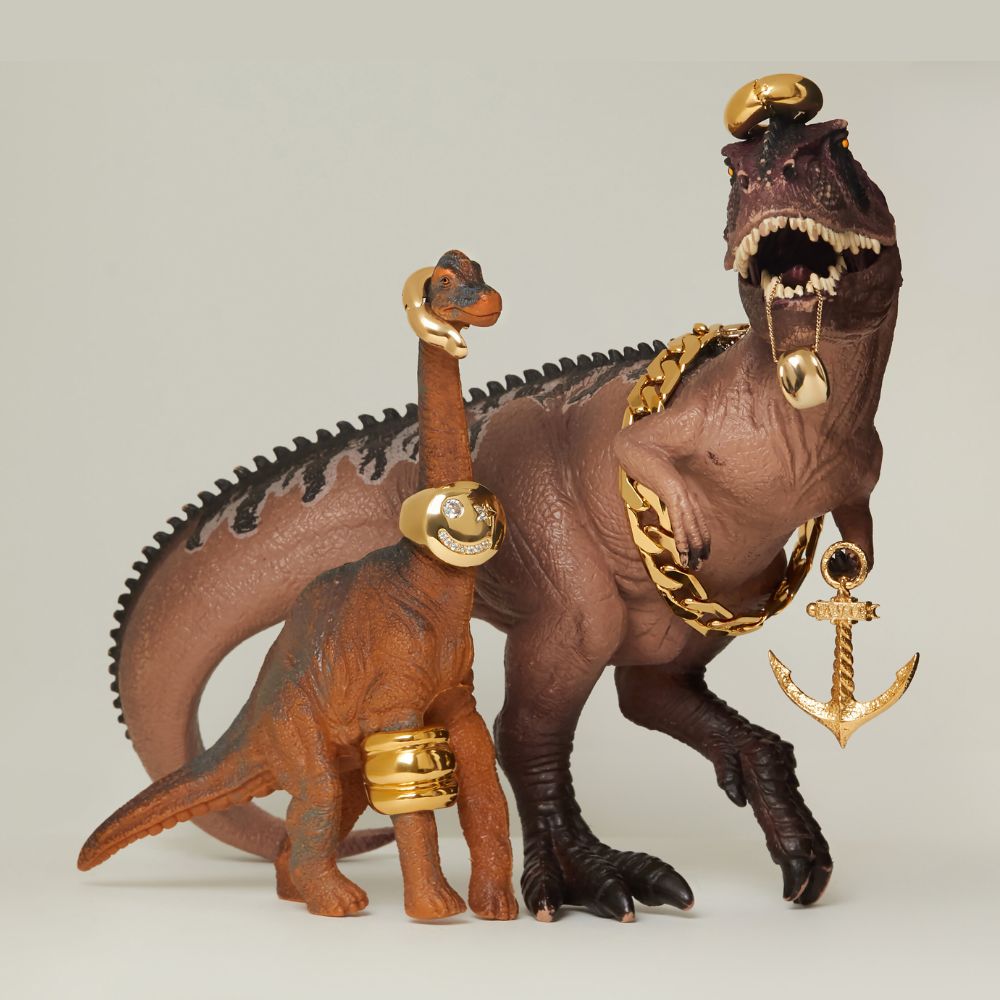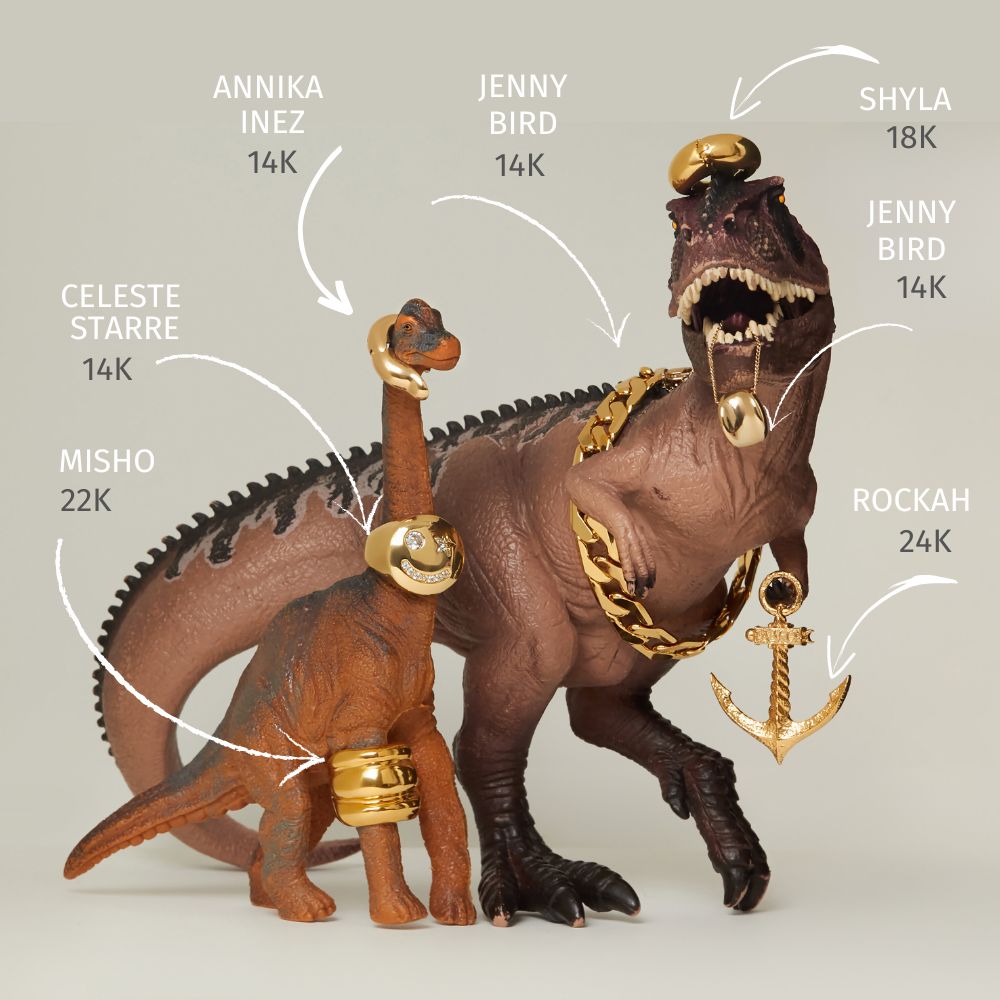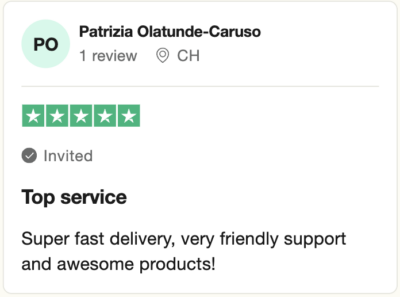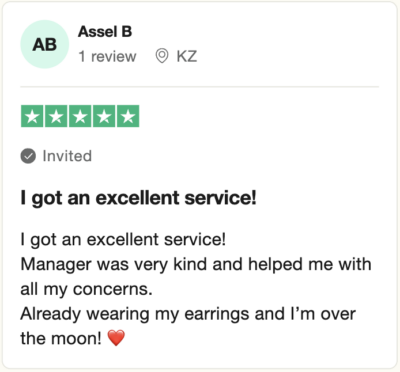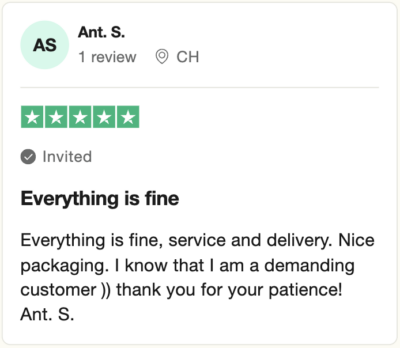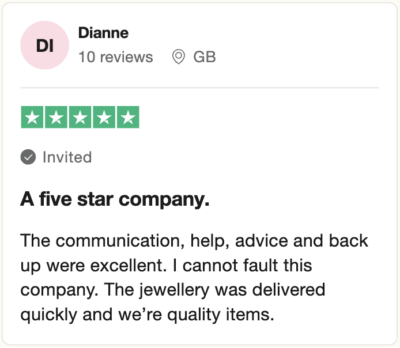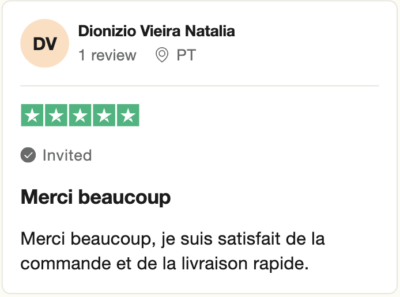Jewelry Materials Full Guide
The description of materials in jewelry often raises a lot of questions from our customers. Therefore, we have collected all the most common in this guide, so that you can answer your own questions:
How do I take care of a particular product?
How long will it keep its original appearance?
Will my jewelry change color?
So, let’s start with the key one: is the piece of jewelry made from a bare piece of metal, or is it a coated base metal? Solid metal is the most durable option. Nothing will lose color, will not fade. And if it gets scratched or loses its shine, it is easy to restore (cleaning and polishing). Therefore, jewelry made of gold (any carat), sterling silver or 316l steel without additional coating is practically eternal.
As soon as the piece has a coating, the situation becomes a little more complicated. In some cases, a coating is applied to a precious metal to enhance its stability and brilliance or to correct the color (for example, rhodium plating of silver or white gold jewelry). In such cases, the base metal and the coating almost match in color, and therefore, even when the coating wears off over time, it will be completely invisible on the jewelry.
Another case is when the base metal is covered with gold or silver in order to make the jewelry more affordable. So voluminous gold hoops earrings made of pure gold will cost from 700 euros only because of the weight of the spent precious metal. And a product with exactly the same appearance, but from an inexpensive base metal and only covered with gold – 150 euros. Most base metals have a reddish tint, so when the gold or silver plating begins to wear off, the difference in hue becomes very noticeable.
“How long will gold-plated jewelry last?”
A simple answer to this question does not exist, because the life of such an ornament depends on a million factors:
1. What is the base metal of the piece. It is believed, for example, that gold-plated silver lasts longer.
2. What is the coating method and thickness in microns.
3. What kind of jewelry and how is it used and stored?
4. And a million more questions, up to what is the ph of your skin and how actively it secretes.
Let’s start with the materials that are the base for jewelry.
Materials.
Solid gold is the most expensive precious metal. In jewelry, it is soft and scratches easily, but it can always be polished. Jewelry made of gold is almost eternal. And if you get tired of it, you can always melt it into another at the jeweler.
Platinum.
It is also a precious metal, more stable and durable than gold. There is an opinion that platinum is more expensive than gold, but this is not true. The metal itself is cheaper than gold, but due to the fact that it is much more difficult to work with it, the price of platinum jewelry is usually higher.
Silver.
It is a durable metal for the base of jewelry, which perfectly holds its shape indefinitely. In addition, it is a precious metal that can be easily melted down into other products. Silver is hypoallergenic, does not change its color and does not stain the skin.
Brass.
This is a special jewelry alloy that usually uses copper and zinc in varying proportions. Brass, unlike silver, is not considered a precious metal. However, it is much stronger than silver, because jewelry made from it is more wear-resistant. It has a reddish tint, therefore, when erasing the coating with gold or silver, the color change will be noticeable. However, most brass items can be easily replated.
Steel.
For jewelry, special 316L jewelry steel is used, it is also called medical. Such steel is absolutely hypoallergenic and very durable.
Copper.
Since ancient times, copper jewelry has been considered healing: they harmonize magnetic fields, stimulate lymph flow and improve sleep. If copper is covered with gold, it will not stain the skin and become patinaless.
Bronze.
Bronze is an alloy of copper with a small amount of tin, which has been used for jewelry since ancient times. It is a durable metal with a warm hue, similar to gold. At the same time, bronze allows you to create jewelry with a wide variety of textures: from polished to textured. For this reason, many designers like to make a gold plated bronze jewelry.
Pewter.
Pewter, a malleable metal alloy, is primarily composed of tin (85-99%), with around 5-10% antimony, 2% copper, and traces of bismuth and occasionally silver. When cast into silicon rubber, our jewelry exhibits remarkable detail and texture. The modern pewter we use contains 95% tin, rendering it highly inert and resistant to chemical reactions. One of the designers represented by us, Paola Sighinolfi, specifically opted for this material.
Type of a plating
The method of coating application is often decisive, as it is closely related to its thickness. Obviously, the thicker the coating (ceteris paribus), the longer it will last.
The picture below clearly shows the differences between the terms of the most popular methods.
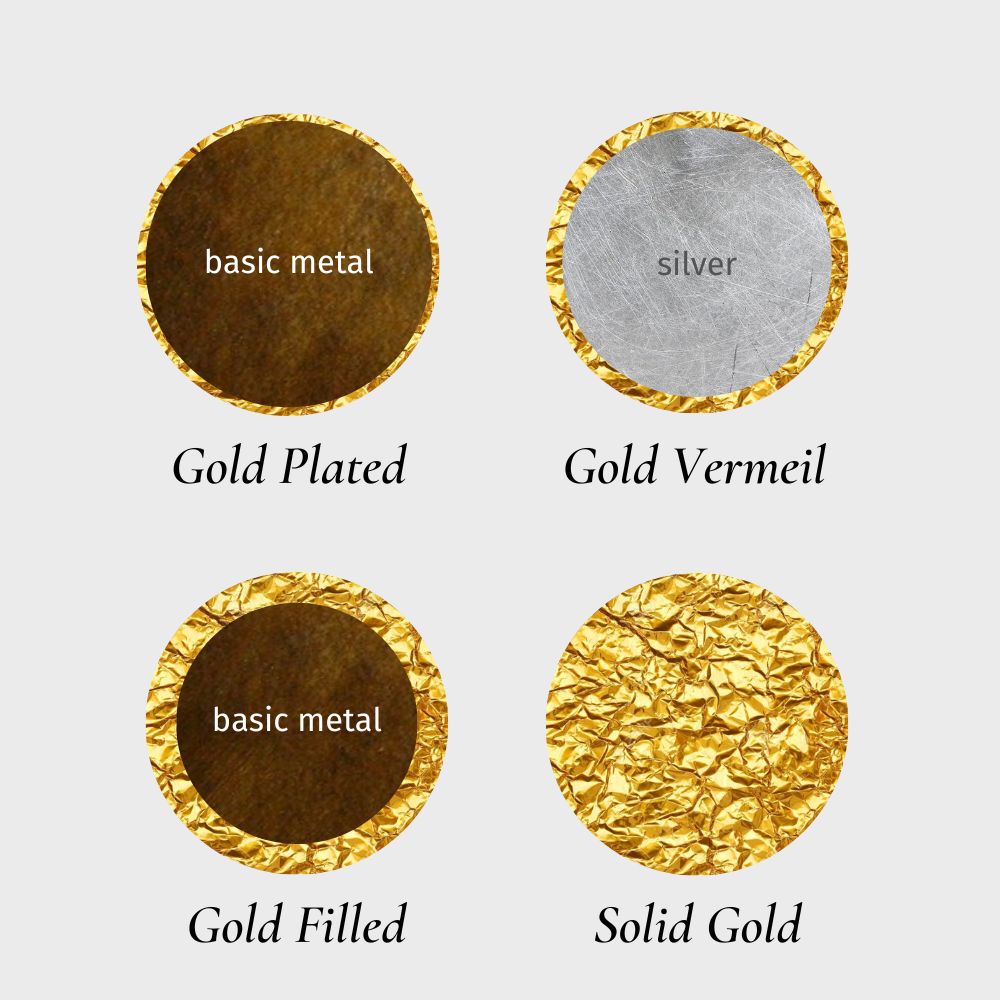
Gold plated
A layer of gold is applied over the base metal. Over time (depending on the thickness of the coating), this layer will gently rub off. However, the piece of jewellery can always be recoated. In 99% gold plating is made by electroplating, which relies on a chemical process to combine various layers of metal into a solid piece with a layer of gold resting on the surface.
Typically, the thickness of such a coating is from 1 to 3 microns, which guarantees from 3 to 12 months of the ideal appearance of the product.
Gold Vermeil.
Sterling silver plated with gold is much denser than conventional gold-plating. It will last for several years and then can be covered with gold again.
The method used is the same – electroplating. In some countries, the thickness of the coating with gold vermeil is legally regulated. For example, in the United States, in order to use the term gold vermeil, the item must have a minimum 2.5 micron coating thickness, and the gold carat must be 10k or more. But in Canada, the minimum thickness is only 1 micron, which is twice as thin as many French stamps use with conventional gold plating. Shashi, Hermina Athens, and Annika Inez work with this material among our brands.
Gold-filled.
The most durable method of applying gold, since its layer on the base metal is 5-10 times thicker than conventional gold-plating. Such a product will last more than 10 years before you find traces of the base metal under it.
With this method, gold must be at least 5% of the total weight of the product. The base metal in such cases is used more affordable than silver. This is logical enough, because in gold-plated jewelry, we are unlikely to be happy to see the base metal underneath, whatever it is.
PVD gold coating.
Physical Vapor Deposition, or PVD, is a vacuum coating process that produces a brilliant decorative and functional finish.
This is a traditional way of modern gold plating of steel cases and wrist watch bracelets. This method is more expensive and technologically advanced, and as a result, the coating lasts much longer than usual electroplating with gold.
For jewelry, this method is used extremely rarely (unfortunately). The PVD coating technology is much more expensive (recall, there is an installation that simulates a vacuum) and requires the simultaneous coating of a large number of products. Whereas conventional electroplating (based on a chemical reaction) is a very affordable way and you can even buy a kit online for home use.
IP coating.
This is one of the subspecies of PVD coating and has the same advantages.
Silver Plated.
A layer of silver is applied to the base metal. Such products are more resistant to mechanical damage than pure silver. However, over time (from several years) the coating is erased, but you can always replate it. The main method here is also electroplating.
In the photo below, jewelry made of silver and silver-plated base metal. Guess which one where? Photos with answers in the carousel.
As we have already mentioned, the service life of different types of gold-plated jewelry is different.
Gold plating is relatively delicate and therefore almost any chemical and physical impact shortens its service life.
Accordingly, the thickest coating is required for rings and bracelets. So, a major part of modern designers for rings use a coating of at least 3 microns. Because it is the rings on the fingers that interact with water and other chemicals all the time, and also touch other objects all the time, scratching them.
Necklaces are more stable, but they should be protected from interaction with cosmetics and perfumes. And the coating on the earrings will be the most stable, because you (usually) touch them only when putting them on and taking them off, and there is no other influence on them. For earrings, a coating of 1 micron thick is quite acceptable.
The most popular gold coating thickness for jewelry is 1-3 microns.
1 micron.
This layer of coating is usually used only on earrings and necklaces. With regular wear, it will last 1-2 years. Then the product can be coated again and it will be like new.
2 microns.
The most common coating thickness in jewelry. With proper regular use for 2 years, you will not notice signs of wear (this period is shorter on rings, longer on earrings and necklaces). Then the product can be coated again and it will be like new.
3 microns.
This is a very thick coating that will last 4-5 years until the first traces of wear. Great for rings and bracelets. And you can wear earrings with such a coating for more than 10 years.
5+ microns.
The greater the thickness of the gold plating, the longer the jewelry will not show signs of wear. Anything above 5 microns is a rare option and takei embellishments are a great buy.
And now you can independently answer the question “Which is better: gold plating or gold vermeil?”. From the point of view of the service life of the piece, the option where the coating thickness (in microns) is greater is better. Usually, it’s a gold vermeil. However, we can find jewelry made of gold vermeil with 1 micron of gold and jewelry marked “gold-plated” (made of brass or the same silver) with a coating thickness of 3 microns. Obviously, the latter you will wear longer.
Carats of gold
The karat of gold, which is almost always indicated by brands in the description of their jewelry, indicates only … the shade of gold (if we are talking about gold-plated jewelry).
Carat is the number of parts (out of 24) of gold in an alloy. Since gold is a very soft and ductile metal, other metals are almost always added to the alloy, which make it possible to obtain a more durable material or a different shade (white or pink gold is due precisely to other metals in the alloy). Accordingly, 14 carats of gold means that 14 parts out of 24 (or 58.3%) in the alloy is gold.
If we are talking about gold plating, then in fact the number of carats only affects the shade of gold. The more carats, the richer and darker the gold color.
If we are talking about carat in a solid gold piece, then of course, the lower the carat, the cheaper the product, because it contains less precious metal in the alloy. However, the color of the metal will be paler (up to pale straw in 9k gold).
There are situations where miniature 9k gold jewelry can cost as much as the same 18k or 24k gold vermeil jewelry. In these cases, we recommend buying gold jewelry (if you like the color of it at 9k of course), because from solid year will never lose color, will not become cloudy and will serve indefinitely.
Carat gold plating:
14k gold.
58.3% pure gold in alloy. Sufficiently durable material with medium color intensity. The most widely used alloy in jewelry.
18k gold.
75% gold in composition. The other metals in the alloy provide it with strength and stability. Intense golden color.
22k gold.
In such a coating there will be 91.6% pure gold with a small percentage of impurities, which will provide additional stability to the alloy. Gold of this carat has a very rich golden color.
This coating will be 99.9% pure gold without any impurities. Such gold will be the brightest and most saturated color.
In the photo below you can compare shades of gold of different carats. Try to guess how many carats are in each piece of jewelry. To see the correct answer, scroll through the carousel with a photo.
Summary
If we sum up all the above very briefly, we can single out such rules for buying jewelry that will last as long as possible.
1. If possible, choose unplated solid metal jewelry. Sterling silver, gold (any carat) or steel will last forever because such jewelry can be safely washed, cleaned and polished.
2. Gold-plated jewelry requires proper care: proper storage, protection from water and cosmetics. This will significantly increase their service life.
3. Feel free to buy gold-plated earrings and necklaces, but try to avoid such options in rings. But in any case, it is worth analyzing a particular piece of jewelry. The coating will most likely come off where the thing is in contact with something or where two segments are movably connected and rubbed. Often, designers who care about the life of their creations place the glare exactly where nothing can harm it.
4. Replating is a fairly common service and if your favorite piece of jewelry has signs of wear, replating with gold will make it new again.





